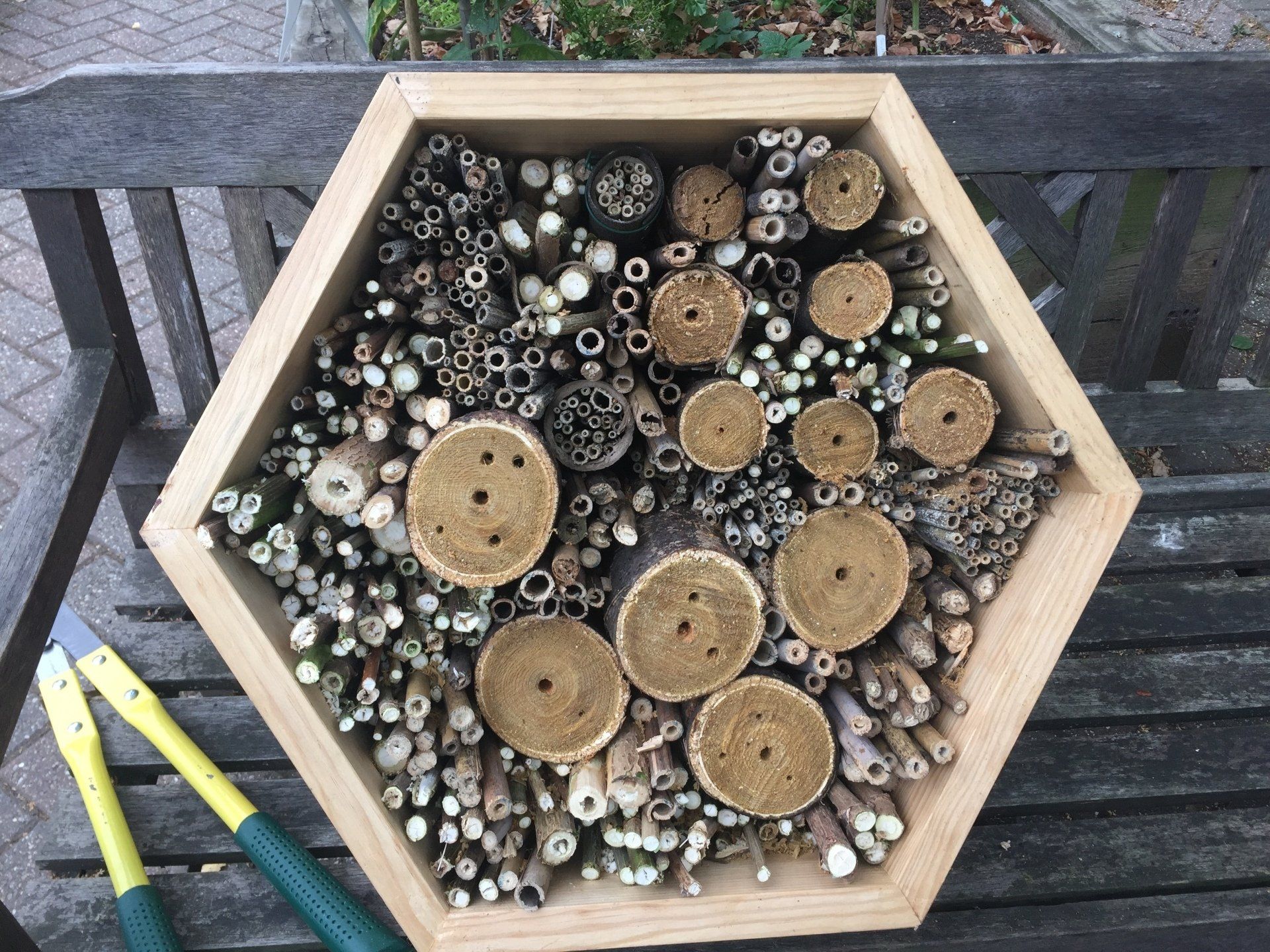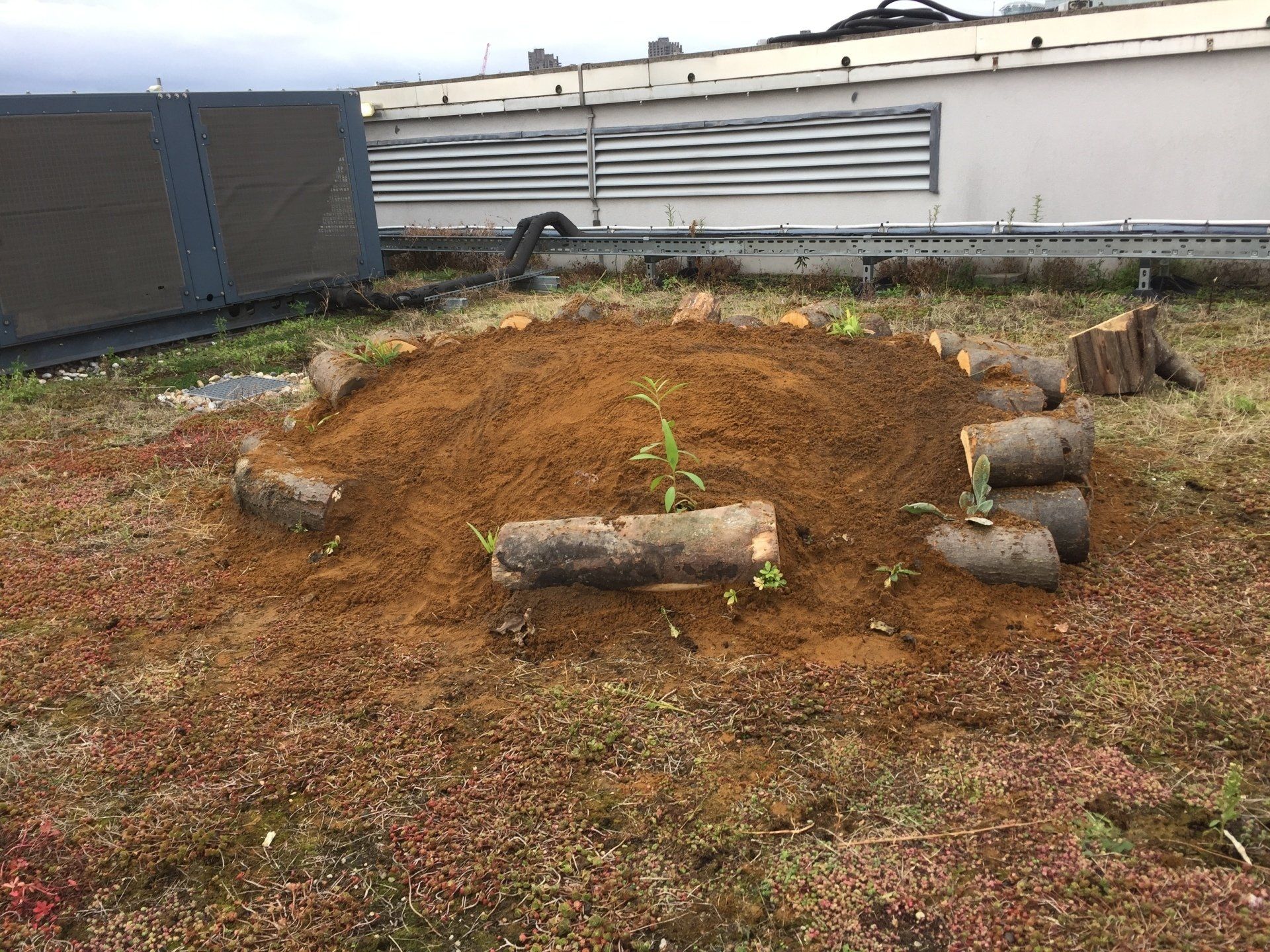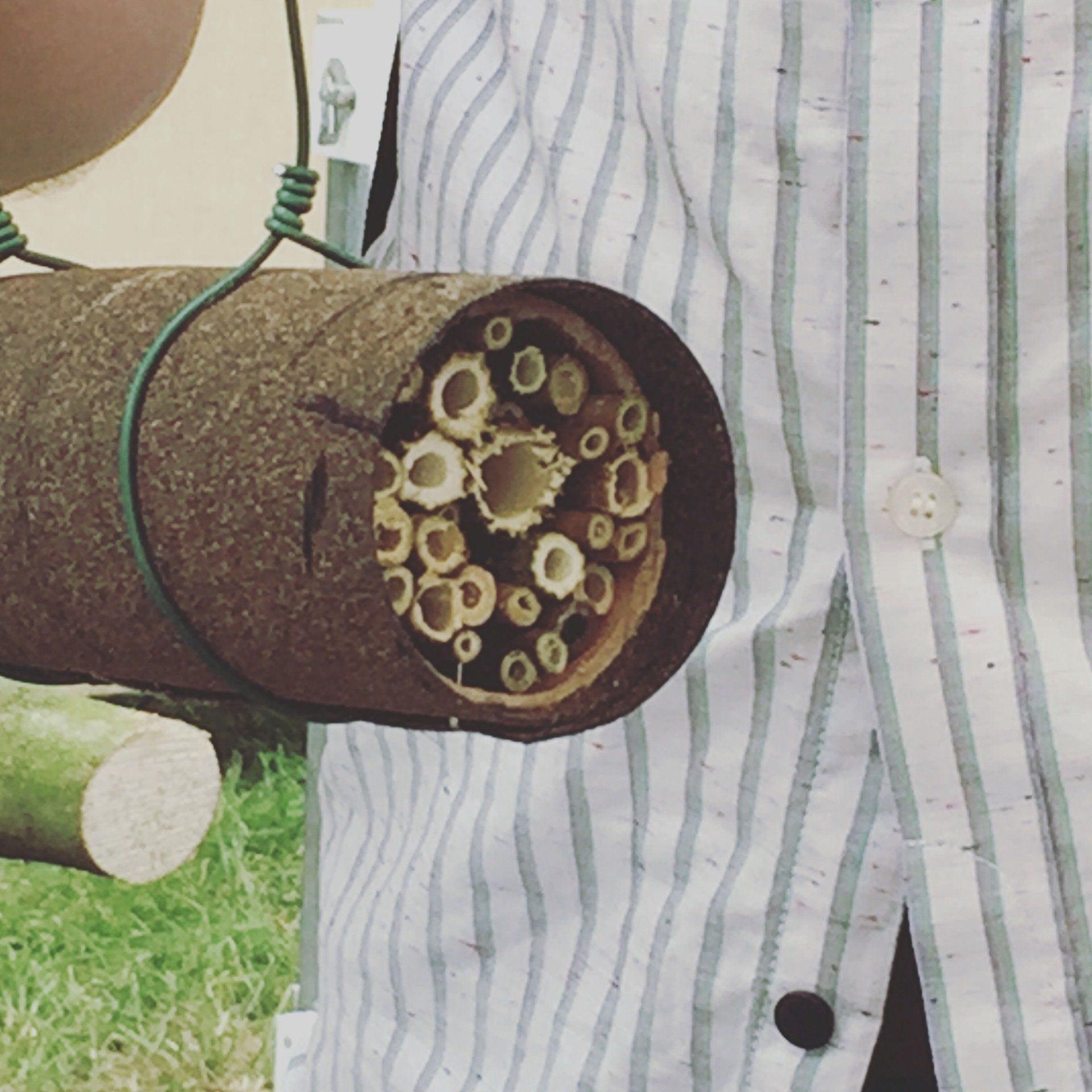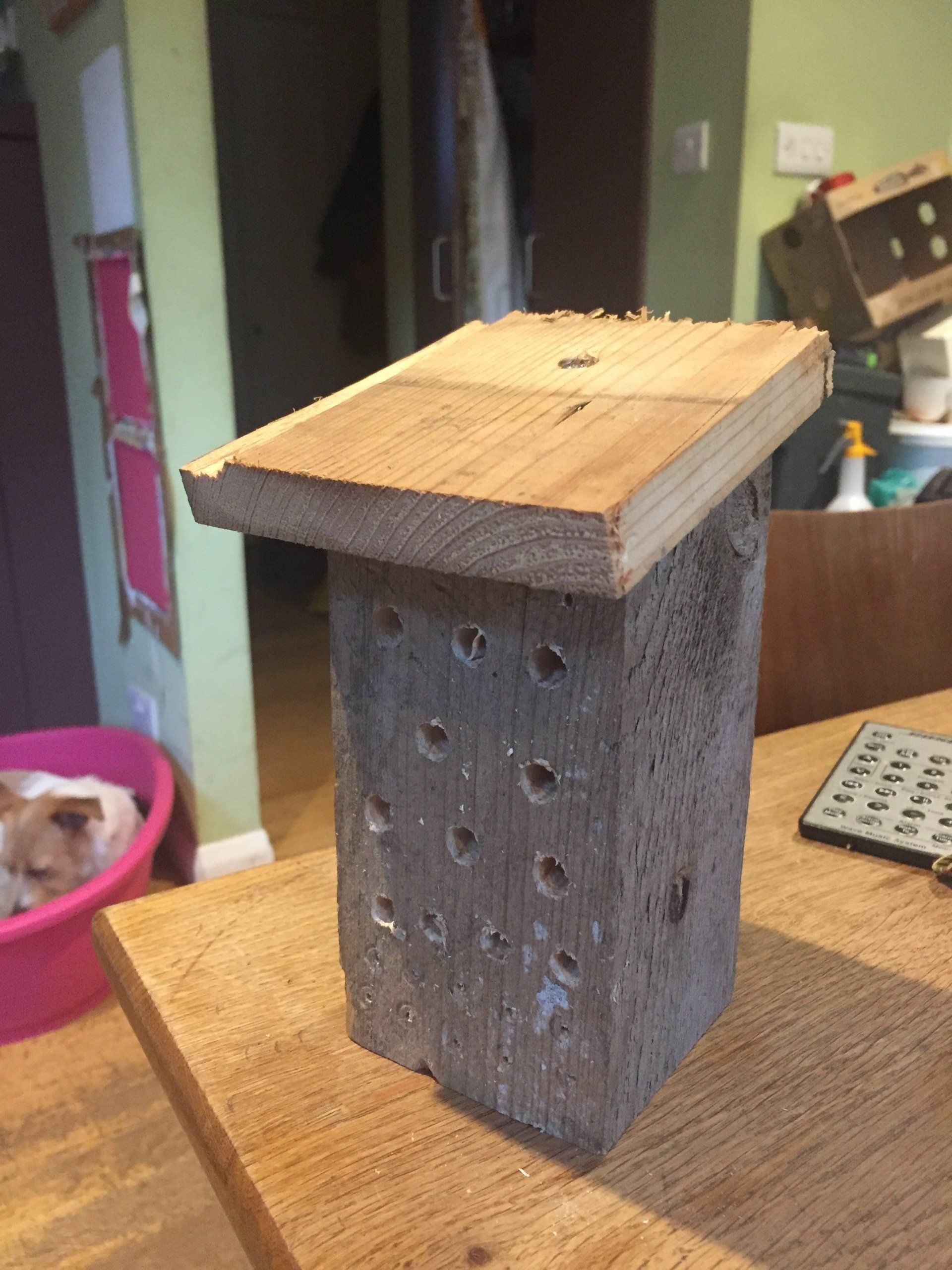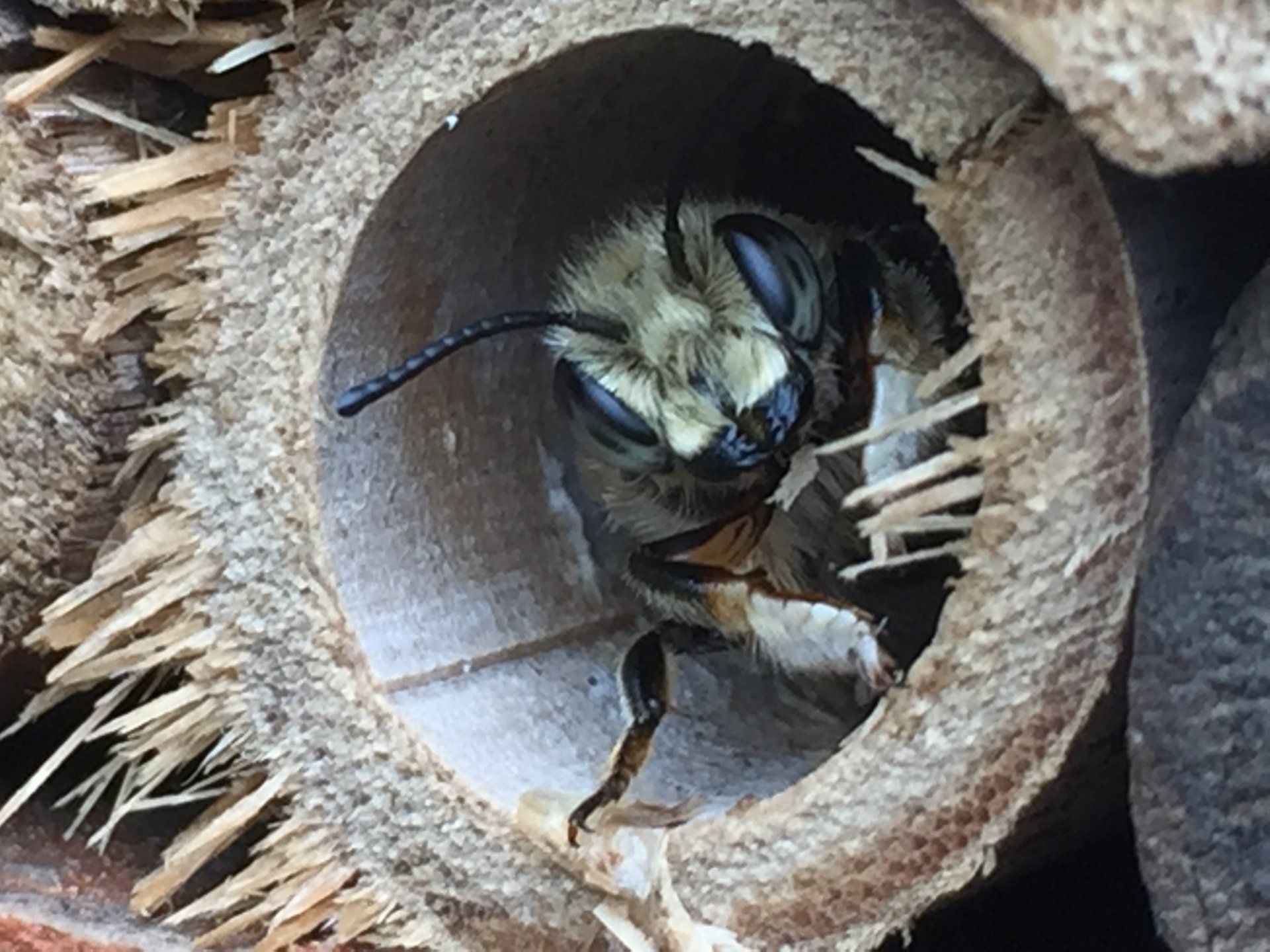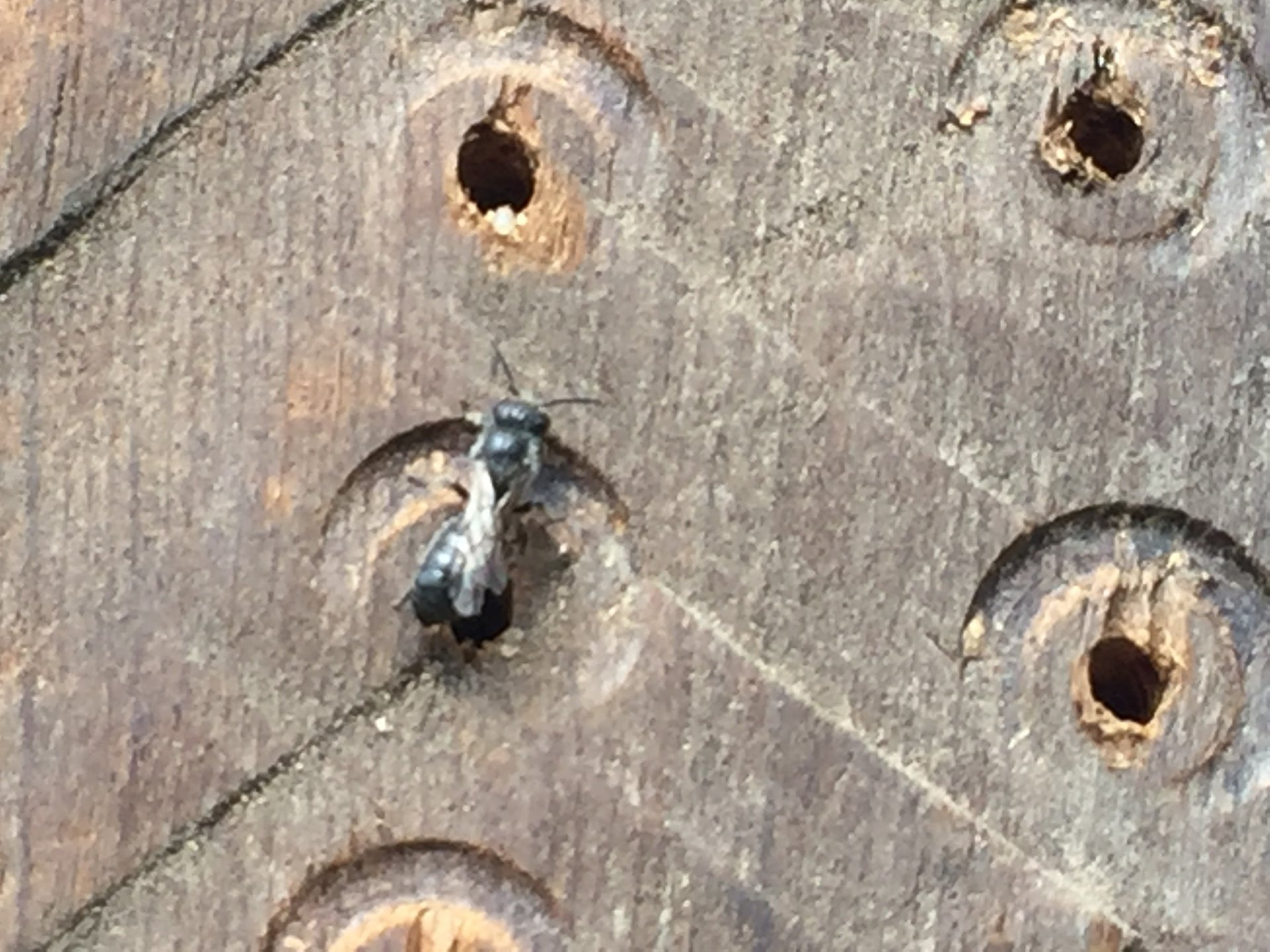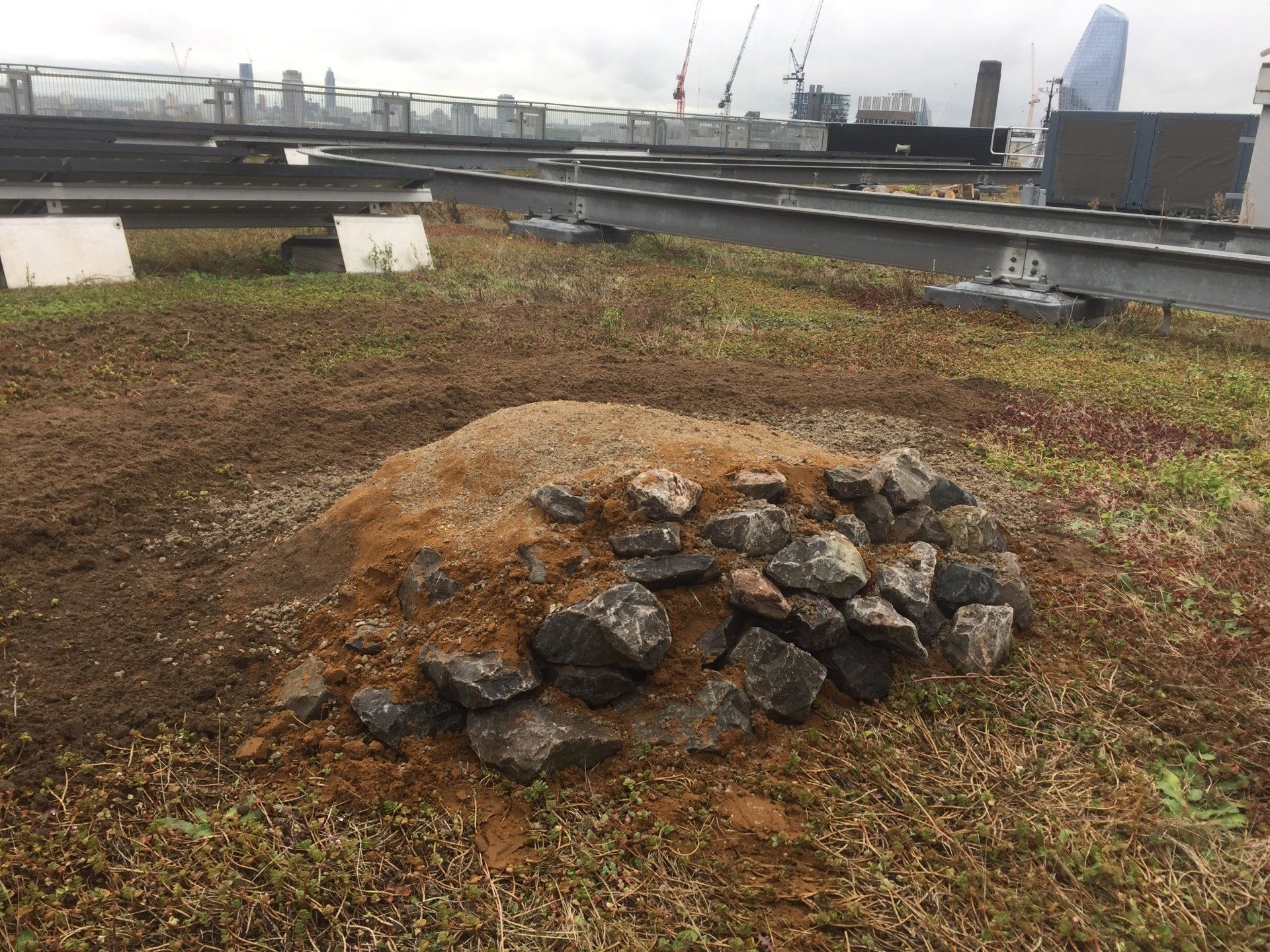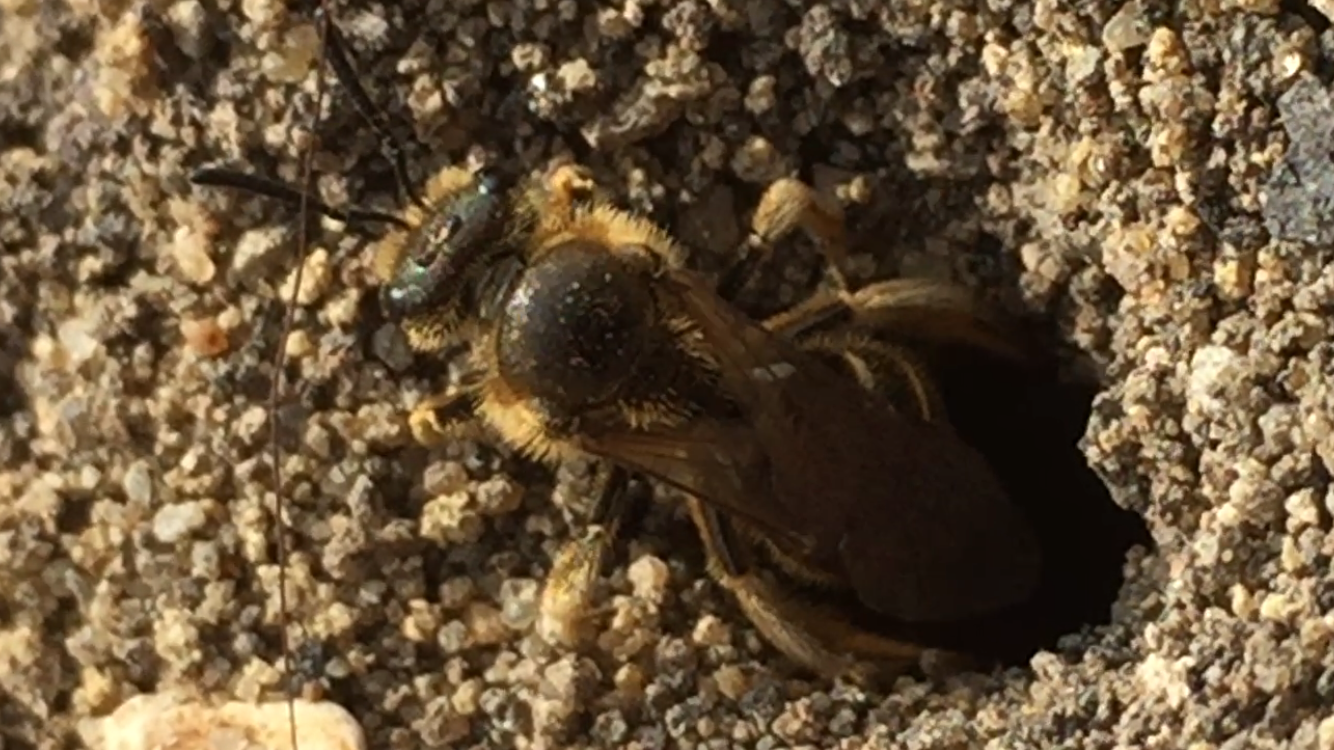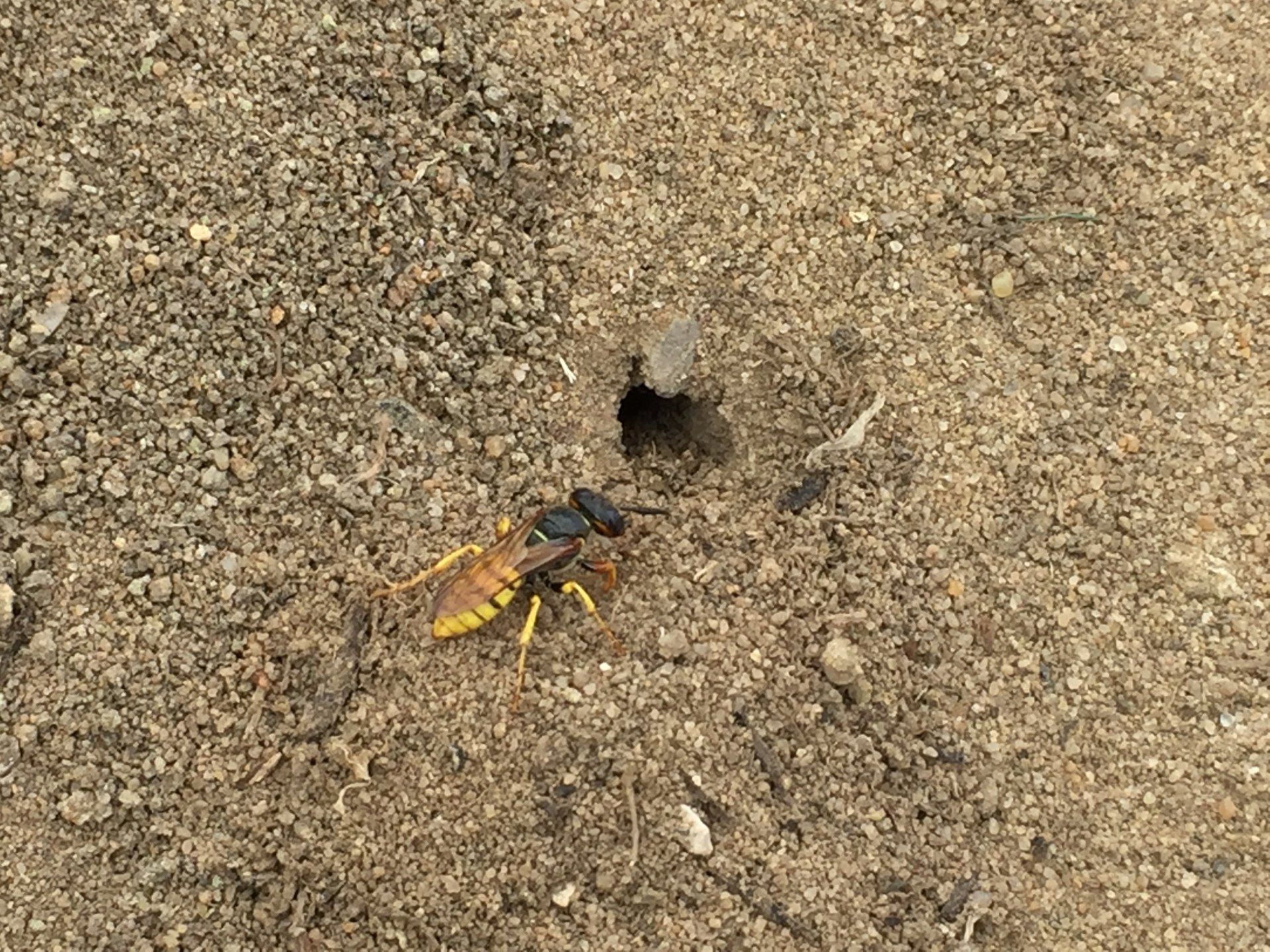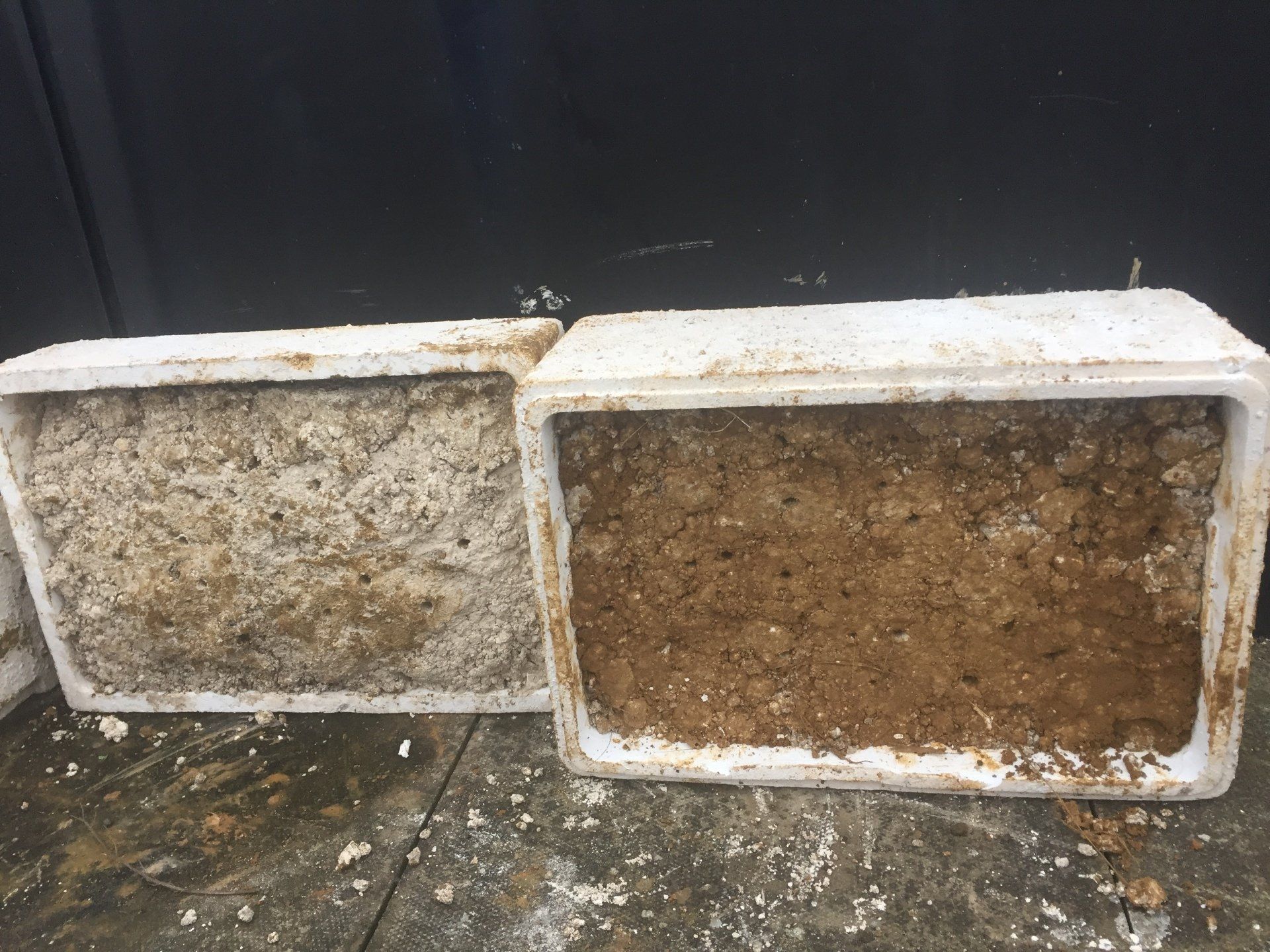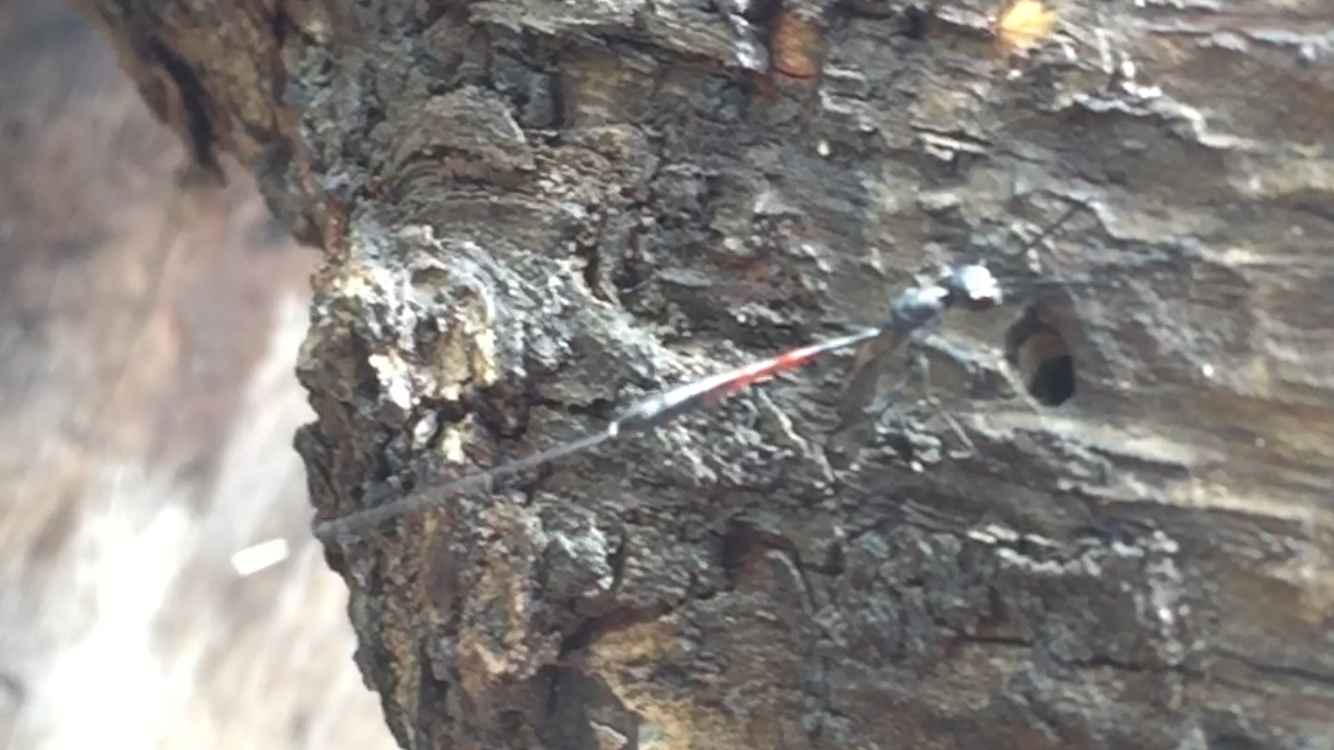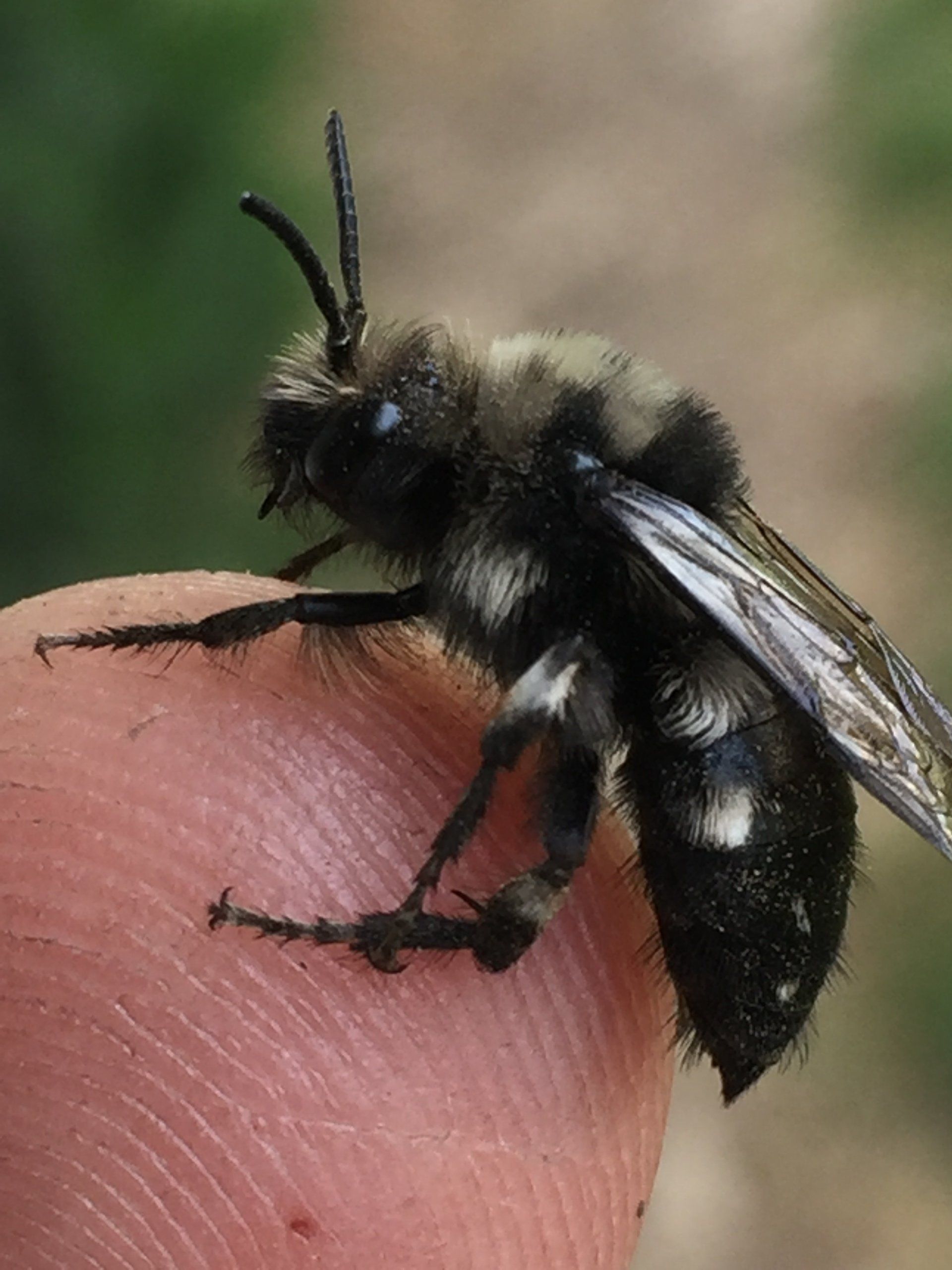Creating Nesting Habitats for Bees
Planting Flowers to create feeding habitat providing nectar and pollen is one way to help bees but just as important is the need for suitable nesting habitat. Unlike Honey Bees which live in large man made hives most bees do not nest in colonies and will not readily take to a large empty box. Wild bees also won't tolerate manipulations of their nests like Honey Bees do when a beekeeper inspects them, they should be designed for minimal disturbance.
To help wild bees we need to provide a range of alternative nesting habitats. Different species of wild bee nest in different environments so if we want to encourage a wide variety of bees we need to incorporate a wide diversity of nesting habitats into the landscape.
Leafcutter and Mason bees can be attracted to nest by erecting solitary bee hotels which contain cavities for the bees to nest in. You can buy ready made bee hotels from garden centres and online suppliers. These are usually made of a box or other container holding many hollow bamboo canes with hollow centres of blocks of wood with cavities drilled into them. Shop bought bee hotels can be expensive and often dont attract many if any bees to nest inside them. This is usually because the cavities are too short or an inappropriate diameter.
Build your own Bee Hotel
To build your own hotels use natural materials like bamboo or other hollow plant stems. Hogweed, Cow Parsley, Sunflower stems, Elder twigs, Bramble stems, Sedum flower stalks and reeds are good choices. These materials are naturally hollow and breathable ensuring bees dont suffer from damp which can encourage moulds.
Cut your stems or bamboo near to a node ensuring one end of a cut section has a closed node whilst the other end is open exposing the hollow centre-this is where the bee will enter to make its nest.
Short sections of material will be less attractive to bees than longer sections. As a guide you ideally want sections around 10 inches in length. Solitary Bees almost always lay eggs which hatch into male offspring in the last few inches nearest the cavity opening and tend to only produce female offspring near the rear of the cavity. Using short canes usually results in more males being produced than females which tips the balance of the sexes in favour of males and results in fewer females which can reproduce to increase populations.
The other reason for favouring longer or deeper tubes is because solitary bees are plagued by many parasitic wasps which lay their own eggs inside the bees nest chambers. Chambers nearer the tubes entrance are more likely to be parasitized whilst bees chambers further back are safer from attack.
You can also try drilling holes into blocks of wood. Again the cavities should ideally be around 10 inches long and between 3-11mm in diameter. small holes 3-6mm in diameter will attract Herades resin bees and Yellow Faced Bees. Cavities 7-11mm diameter will attract Mason, Leafcutter and Wool Carder Bees.
Erect your bee hotels on a south or east facing fence, wall or tree. Linear features are the best place to erect them as these are landmarks bees will patrol prospecting for nest sites.
Nesting habitats for ground nesting bees
Many wild bees nest in underground burrows which they usually excavate themselves. Most species prefer compacted dry sandy soil or dry loam to excavate their nests. Some species prefer chalk and some prefer clay. A few will nest in very loose fine sand.
You can attract a wide variety of bees to nest by creating mounds of substrate made of different soil types. If you only have room for one mound then try using a mix of 25% top soil, 25% sharp sand and 50% soft builders sand or Hoggin mix. This sort of soil mix is likely to attract the most variety of bees and solitary wasps to nest.
Ideally your mound should be facing a southerly aspect so that the warmth of the sun can aid in incubation of the bees nests and help keep the mound dry.
Pile your substrate into a mound and walk on it or patt it down firmly to compress and compact the soil mixture. You need to ensure that the sand and soil particles bind well together, this helps to ensure that bees nest burrows won't collapse and the closely bonded particles help expel moisture.
I like to build mounds with a north facing retaining wall made of boulders, stones or logs. These retaining walls contain lots of cavities and nooks and crannies which hibernating bumblebees can use. If they are north facing the bees won't wake up too early in spring because of the sun's warmth.
A log retaining wall or logs partially buried in the ground also provide nesting habitat for species like the Fork Tailed Flower Bee which prefers to excavate its own nest burrow in decaying tree stumps.
Cob walls and nest boxes for Solitary Bees
Some species of Solitary bee prefer to nest in vertical surfaces such as soft rock cliffs, scar banks and river banks where they can excavate their nest burrows in vertical surfaces out of reach of predators like Badgers and where they are safe from the risk of nest burrows being flooded by rising water levels.
You can cater for these bees by filling boxes with clay, soft chalk, weak sand and cement mix or a cob mixture. Cob is a particular favourite with Hairy Footed Flower Bees. To make Cob mix 25% clay, 25% straw and 50% builders sand together compressing it into the box or into large bricks. Allow to dry before standing upright. Bees will burrow into the soft mixture to form their nests. Its a good idea to protect your earthen bee boxes from the rain as they may become waterlogged and collapse. You could build a simple shelter or porch over the front of them. As with other nest habitats its best that they are south facing.
Cleaning your bee nest boxes and replacing nesting tubes.
After several years of usage you may find that your bee nesting habitats start to attract more bee predators and parasites than actual nesting bees. You may also find the bees are less successful at nesting because the become prone to disease or fungal pathogens.
In this scenario you should change the nesting tubes for fresh ones and change the Cob mix in your bee boxes. Whilst some people want to discourage the bees parasites it is worth noting that some of the parasitic wasps that prey on solitary bees are even rarer and just as under threat as the bees themselves and are worthy of conserving.

